
Materiality in Spanish American Art Reveals Local and Global Trade Networks
August 2021 Through materials, NU-ACCESS studies Indigenous and European influences in art from the colonial Spanish Americas.

August 2021 Through materials, NU-ACCESS studies Indigenous and European influences in art from the colonial Spanish Americas.

July 2021 Researchers at NU-ACCESS utilize interdisciplinary methods to study the complex materials that make up art and artefacts so that future generations can continue to enjoy them.

April 2021 In collaboration with the Straus Center for Conservation and Technical Studies at the Harvard Art Museums, NU-ACCESS helped uncover and analyze a painted-over landscape composition underneath “Poèmes Barbares'' by Paul Gauguin.

March 2021 With the help of NU-ACCESS, doctoral candidate Olivia Dill is investigating the pigments used in three 18th-century Merian prints, but the scientific analysis has inspired new questions about the prints’ provenance.
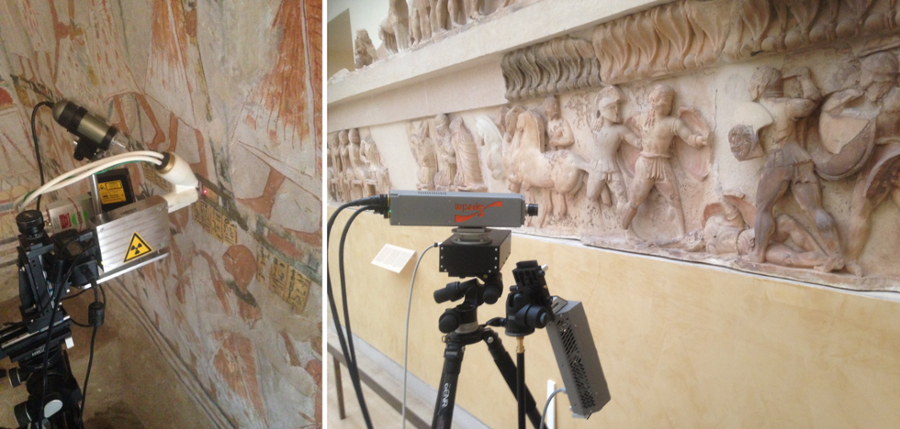
August 2019 The Center welcomes speaker Matthias Alfeld from Delft University of Technology, Netherlands on August 14th to give a talk on "Evaluating Spectroscopic Imaging Data of Cultural Heritage Objects Acquired on the Macroscopic Scale. " He will discuss how macroscopic and microscopic scale investigations of cultural heritage objects, and the novel approaches to exploit local information beyond the isolated pixel level, can obtain more meaningful representations and discuss their practicality.

June 2019 The Center welcomes Dr. Marcello Picollo, researcher at the Institute of Applied Physics “Nello Carrara” of the National Research Council of Italy, Florence, presenting his talk on "Imaging Spectroscopy: 25 years of experience at IFAC-CNR." This talk will discuss studies and research projects at IFAC-CNR that customize imaging spectroscopic instrumentation and methodologies to the specific needs of art conservation and applications in the museum context.

March 2019 The Center welcomes speaker Patrick Degryse from the Catholic University of Leuven on April 10th to present his talk on "The Origins of Antimony as a Raw Material in Metal and Vitreous Materials Making: Yellow Glass and Gold from the Bronze Age to the Romans." He will discuss how the origins of man-made materials, and determining the provenance of the minerals used in making them, are crucial to the study of ancient societies, and the primary origin of the Sb raw materials used in several technological processes such as glass making and metal alloying.

March 2019 The Center welcomes Dr. P.D. (Piet) Iedema on Friday, March 8th for his talk, "Polymer Modeling for Art and Industry." Join us for a lecture and discussion on a multi-physics approach to mathematical modeling of polymer network based paints, as applied to photocuring acrylates (e.g., used in 3D printing [art] objects) and linseed oil-based binding medium in oil paintings.

February 2019 Northwestern Engineering’s Linda Broadbelt has been elected to the National Academy of Engineering (NAE), one of the highest professional distinctions awarded to an engineer.

February 2019 Co-director Marc Walton and affiliate faculty member Oliver Cossairt presented their findings that metal soaps are responsible for the destructive pimple-like protrusions in Georgia O’Keeffe’s paintings at the 2019 AAAS annual meeting in Washington DC.

December 2018 Join us for a lecture and discussion on Cultural Heritage as one of Europe’s most precious political, economic and social assets. Since libraries, museums and archives nowadays start to use massive digitization, a lot of new possibilities arise with this newly generated data. Data extracted from this digital patrimony are the basis for the reconstruction of the historical evolution of most European cities and the economical, cultural, and migration networks between these urban nodes. Through ‘big data of the past’, the project aims to make the past as easily accessible as the present. Another goal is to investigate new methods of digitization for fragile documents. Non-invasive imaging techniques such as X-ray CT are capable of revealing hidden contents of documents that can not be opened anymore. This can help conservators to store information in a digital manner before manually opening or cleaning scrolls or manuscripts.

December 2018 Join us for a lecture and discussion on the application of computational physics techniques to the study of materials significant in the field of Cultural Heritage: solid compounds constituting the colored pigments in the paintings of the European Impressionist and Modernist period. Several of the historical colored pigments from the late 1800 and early 1900 are undergoing an irreversible degradation process. In the specific case of the brilliant yellow pigment that takes its colouration from cadmium sulfide (CdS), a II-VI wide-gap semiconducting compound, the role of structural defects is the subject of a still on-going research that aims to link the history of the material to the reactivity of the pigment surface.

October 2018 This panel, sponsored by the Northwestern University / Art Institute of Chicago Center for Scientific Studies in the Arts (NU-ACCESS), will examine how objects, when interrogated through the multiple lenses of a conservator, an art historian, an anthropologist, and a historian, can provide new information and fresh approaches to write theirs (and our civilization’s) histories.

October 2018 Join us for a lecture and discussion to unravel the molecular structure of aged oil paint and the fundamental chemical mechanisms that cause their degradation. This is becoming key for carrying out risk assessment and to develop improved conservation strategies.

October 2018 Join us for a lecture and discussion on the process of cracks saturation fundamental to understanding why panel paintings survived remarkably well in uncontrolled environments of historic houses or places of worship for several centuries. The process of cracks formation was analyzed using computer simulation supported by experimental determination of relevant mechanical properties.

September 2018 Join us for a lecture and discussion on the use of photo-induced luminescence techniques for the characterisation of cultural heritage. In particular, and by means of a number of case studies, it will highlight the effects of absorption of luminescence emission by coloured compounds and how these effects can be taken into consideration when interpreting luminescence data.

August 2018 Join us for a lecture and discussion on the adaptation and development of new methods and instrumentation to allow the spectroscopic microanalysis of art objects.

July 2018 Join the Center for Scientific Studies in the Arts for the lecture and discussion on the power of the X-rays to image materials at the nano-scale.
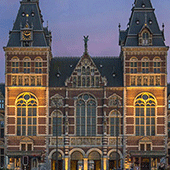
July 2018 Northwestern students present their research at the Gordon Conference on Scientific Methods in Cultural Heritage Research

June 2018 Join the Block Museum of Art on Wednesday, July 11, from 6–7:30 pm to learn how NU-ACCESS scientists uncovered hidden details in Picasso's paintings and sculptures.

June 2018 Grant includes permanent endowment to support the position of a co-director for the Center for the Scientific Studies in the Arts
from Northwestern Now

June 2018 Center for Scientific Studies in the Art's advanced imaging contributions to understanding John Singer Sargent's art at the Art Institute of Chicago highlighted in upcoming npr Science Fridays Live program in Chicago!

February 2018 Walton and Casadio co-organized "Analyzing Picasso: Scientific Innovation, Instrumentation, and Education" using the scientific investigation of Picasso's works as a lens for demonstrating how art can improve the human condition and spark innovation in science and engineering.

February 2018 At the special event hosted by the Block Museum, archaeologists, art historians, scientists and scholars of the ancient world shared their scientific insights into the Roman history and portraiture related to the exhibition "Paint the Eyes Softer: Mummy Portraits from Roman Egypt."

February 2017 Launched in Spring 2016, Dr. Marc Walton’s course on the “Materiality of Art and Archaeology” brought together an interdisciplinary group of students in both Art History and Materials Science to work with and assess objects in the Block Museum collection.

October 2016 “Materiality of Art and Archaeology: An Introduction to Archaeological Science and Technical Art History” offered in Spring 2016 at Northwestern University brought together an interdisciplinary group of students in both Art History and Materials Science to work with and assess objects in the Block Museum collection.

June 2016 Lindsay Oakley is a Northwestern University graduate student working in the Netherlands this summer as part of a NSF sponsored International Research Experience for Students (IRES) focused on investigating questions in cultural heritage science. She discusses the science behind aging works of art and how the masterpieces we encounter are not usually identical to how the artist viewed them years ago.

June 2016 Marcie Wiggins is participating in the NSF-funded International Research Experience for US Students (IRES) this summer in the Netherlands. She discusses how multiple layers of paint in works of art can interact with each other, specifically arsenic paints and their reaction to light.

June 2016 Researchers at the Art Institute of Chicago and Northwestern University know there is much to be appreciated beneath the surface of a painting. That's why Clara Granzotto, a visiting fellow at NU-ACCESS, recently created a new technique to learn which mediums the twentieth century artist, Georges Braque, used for his painting, “Ajax.”

October 2015 Observations and studies of masterpieces of Tuscan sculptors: The David of Michelangelo and the Triptych by Tino di Camaino. A lecture by Professor Marco Giamello at the Art Institute of Chicago, Fri., Oct. 30, 10:30am to 12:00pm, room 328, Sharp Building, 37 S. Wabash Avenue, Chicago, IL.

June 2015 Carla Stone, a Golden Apple 6th grade Science and Social Studies teacher at Martin Luther King Literary and Fine Arts School in Evanston, shares her summer experience with the Research Experience for Teachers program at Northwestern University. Stone's research focused on using RTI on Paul Gauguin's prints to better understand his process during their creation.

May 2015 Prominent Bauhaus artist László Moholy-Nagy (1895-1945) employed a large number of techniques and materials in his artwork, including many newly-developed industrial plastics. NU-ACCESS and Guggenheim Museum collaborated to investigate the artist's techniques, discovering a key error in a description of one of the materials, ultimately saving the work of art.
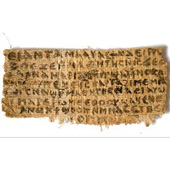
May 2015 Marc Walton discusses the limitations of authenticating works of art using scientific methods and how some forgeries can take advantage of this. In the end, there are some pieces of art whose authenticity remains inconclusive, indicating that even the objectivity of science can struggle to give a straight answer.

May 2015 Dating the vast number of bronze sculptures created by the prolific artist, Auguste Rodin, widely considered the father of modern sculpture, poses a challenge for museums worldwide. Now, scientists at NU-ACCESS have developed a method to help museums — by examining the very material that make up these works of art.
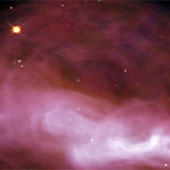
March 2015 Who knew there was so much to blue? This presentation at the Firehouse Grill, part of the Science Cafe form, delves into the history of the color blue and its man made origins.

March 2015 Paul Gauguin is one of the more famous Post-Impressionist artists, most known for his "primitive" paintings of Tahitians surrounded by the flora and fauna of the South Pacific. However, Gauguin also created a number of works on paper that included transfer drawings, developing new printmaking methods along the way. Marc Walton worked with the Art Institute and used computer science to uncover the mysteries behind Gauguin's monotypes.

February 2015 Marc Walton recreates a 15th-century alchemical recipe used to extract blue pigment from the stone lapis lazuli. The ability to replicate these techniques offers valuable information about the pigment and its characteristics.

December 2014 A conference focusing on the Outdoor metallic sculpture from the 19th century to the beginning of the 20th century was held at Galerie Vivienne in Paris on December 4th-5th.

December 2014 A conference at the Library of Congress, Washington DC, on December 1st-3rd discusses the current landscape of EU research infrastructures. Speakers include Ana Arana Antelo, Costis Dallas, Luca Pezzati and Franco Niccolucci.

December 2014 A collaboration between the UCL Early Glass Technology Research Network, the Association for the History of Glass and the British Museum, Things That Travelled discusses the complex history of glass, specifically in the Mediterranean region. The book details the production, technology, distribution and trade of ancient glass in the early millennium, enriching our knowledge of those cultures.

November 2014 Fifteen years ago, Northwestern University scientist Marc Walton was turned on to blue when two basic facts struck him: blue was the first man-made pigment, and the word “blue” didn’t come into existence until many years later. Intrigued, Walton set out to learn more about this “most human” color.
from Northwestern Now
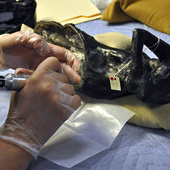
November 2014 A lecture at the Smart Museum of Art, on Wednesday, November 19th discusses how analysis of the composition of sculptures can reveal never before known information about their origins.

June 2014 Amy Gonzalez, a rising senior at Princeton University, shares her journey at Northwestern's Summer Research Experience (REU) with the MRSEC/NU-ACCESS program. Her project focused on studying one of Moholy-Nagy's works of art, B-10 Space Modulator, by attempting to recreate the work herself, using both scientific and artistic techniques.

June 2014 Different wavelengths of light are pointed at works of art in laboratories all over the world, dissecting structure and pigments not seen with the naked eye. Each week it seems experts uncover some facet of a painting previously lost to time, from discovering Rembrandt’s self-portrait to solving a 400 year-old mystery.

May 2014 NU-ACCESS Senior Scientist, Marc Walton, presented a talk on blue at the 25th Anniversary Chicago Humanities Festival - "Journeys" - which took place September 25 - October 9, 2014.

January 2014 Through the NU-ACCESS external research program, new partnerships have been established with the Solomon R. Guggenheim Museum and the Smart Museum at the University of Chicago. The collaboration will focus on an in-depth study of Laszlo Moholy-Nagy and the materials and techniques used in his works.

July 2013 Marc Walton joins NU-ACCESS as the Inaugural Senior Scientist. "Marc not only has a formidable publication record, but he has also developed strong research collaborations across the globe involving universities and industry," says NU-ACCESS Co-Director Katherine Faber. "We feel extremely fortunate to have attracted someone of Marc's caliber to NU-ACCESS."

January 2013 NU-ACCESS has received a $2.5 million grant from the Andrew W. Mellon Foundation, expanding an innovative partnership between Northwestern and the Art Institute of Chicago. Breaking new ground, the conservation science partnership, funded over six years, will offer its scientific tools and expertise to users from across the country.

October 2010 McCormick faculty members Aggelos Katsaggelos and Sotirios Tsaftaris dedicated three years to solve the mystery of Henri Matisse's masterpiece, Bathers By a River. The project to colorize the painting was difficult and emotional but in the end it was rewarding, offering insight into Matisse's artistic evolution.
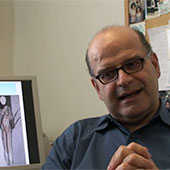
July 2010 Aggelos Katsaggelos and Sotirios Tsaftaris collaborated with the Art Institute of Chicago on colorizing an old black and white photograph of a Matisse painting. The project, which took three years, was strenuous but provided a rich depth to Matisse's evolution as an artist.

November 2009 The partnership between the Art Institute of Chicago and the McCormick School of Engineering provides unique research experiences and shows the broad applications of engineering. Kimberly Gray, Katherine Faber and David Dunand have used their research to solve many mysteries in the art world, from the mineral composition of ancient Chinese jades to the aging process of different pigments.

July 2009 Art and science are often depicted as polar opposites, but the truth is that these areas of study are far more connected than might be imagined. Consider how one of the world's premier museums, the Art Institute of Chicago, is reaching out to Northwestern University scientists to solve mysteries from the institute's collection.
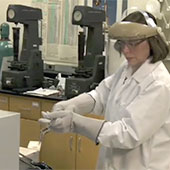
July 2009 Researchers from Northwestern University, together with collaborators from the Art Institute of Chicago, have classified the unique composition profiles of 62 modern sculptures, the first comprehensive survey of the alloy composition of a large number of cast bronze sculptures by major European artists from the first half of the 20th century.

March 2007 Lisa Backus uses her summer research experience at Northwestern to create an innovative curriculum for her students at Deerfield High School. Lessons such as "Why is Red Paint Red?" and "The Art of Science and the Science of Art" are designed to engage students in science through the exploration of art.

March 2006 Francesca Casadio, Andrew W. Mellon and Katherine Farber are the driving forces behind the collaboration between the Art Institute of Chicago and the McCormick School of Engineering. Together, they unravel the mysteries behind countless pieces of art, understanding them in ways that were not previously possible.

November 2005 Northwestern has partnered with The Art Institute of Chicago and Argonne National Laboratory on a long-term art conservation and scientific research program. The initiative will be the nation's first multi-year collaboration in conservation science to involve an art museum and a university.

March 2005 In January, scientists from the Art Institute of Chicago and the McCormick School began an exciting educational seminar series focused on problems and techniques common to conservation science and engineering and the physical sciences.